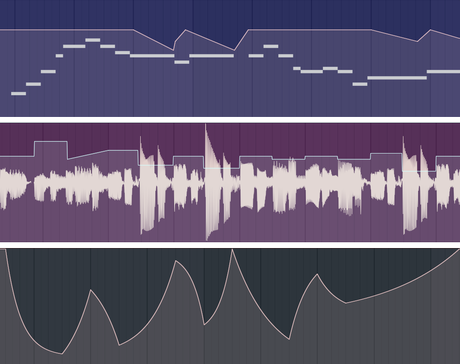Written By: Jacob Morris
Automation is arguably one of the most important tools a producer has. Look at the project file of any professional track and you’ll almost certainly see at least a few of these lines hanging around. Their purposes are extremely varied, but this article is just going to cover the basic uses in the context of DAWs (digital audio workstations) as opposed to consoles and mixers, though the information is largely interchangeable.
Firstly, to define automation: it is simply a way of recording change in a parameter over time.

For example, a fade out at the end of song can be achieved by automating the master volume going from 100% at the point where the fade begins to 0% at the point where the song should end. By default, this would probably be a straight line, although curve options that allow the fade to be more sudden at the start or near the end are common.
“Automation… simply a way of recording change in a parameter over time.”
More complicated options are also available depending on the DAW, but these are mainly used to simplify curves that could be made with multiple automation points, or to simulate LFOs (more on them later)
Volume automation is perhaps the most common form, but its uses aren’t limited to fading out tracks. A more intricate use of it is to even out the volume of vocals manually, or adjust the emphasis on key words and phrases. The evening out can be achieved with compression, though with volume automation, there aren’t any artifacts from the process.
That being said, it is common to combine both compression and intricate volume automation in vocals. Other instruments can also be affected in less immediately obvious ways, such as automating a fade on a long chord to produce a crescendo.
LFO Automation
LFO is somewhat of a different beast, but worth mentioning regardless. It stands for low frequency oscillator when referring to an individual controller, or just low frequency oscillation in general. A common feature in both digital and analog synthesizers, it is used to alter a parameter by following the curve of a waveshape, usually a very slow one, hence the low frequency.
While LFOs lack the immediate customization of automation, they are a useful way to set up repetitive expressions quickly without having to manually draw in or copy and paste many curves.
For example, a smooth vibrato can be added to a sound by assigning pitch to an LFO with a sine or triangle shape; this can be combined with automation as well so that the vibrato comes in on certain notes and left out on others, thus enhancing the level of character. Using a square shape, however, will create a trill instead as it would be jumping between notes distinctly rather than sliding smoothly back and forth.
As it can be used with most parameters in modern plug-ins with a few exceptions, imagination is the limit when it comes to automation. Everything from reverb room size to equalizer settings can potentially be altered, so once you have the basics down, I highly recommend you experiment with it.
Even little touches can make a slightly stagnant track seem a bit more alive as it changes in real time. It is an indispensable tool.
